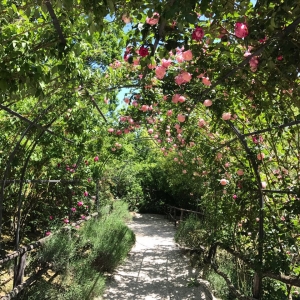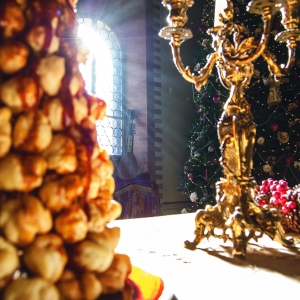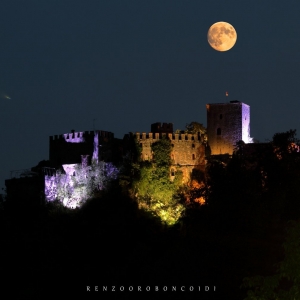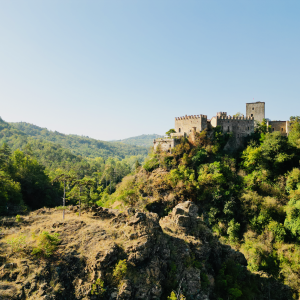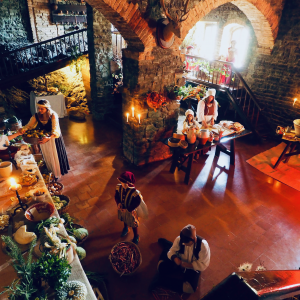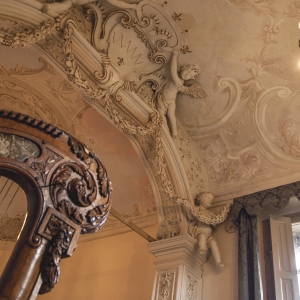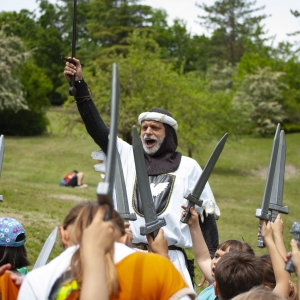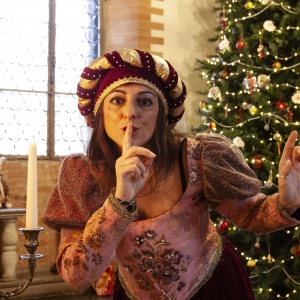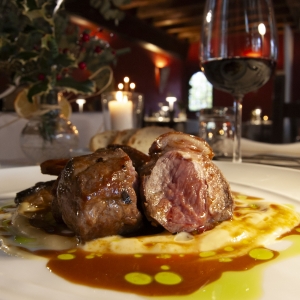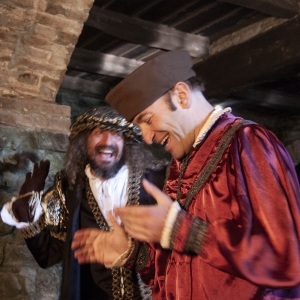The earliest known document on Gropparello dates back to the year 808, and is the act by which the emperor Charlemagne grants the place as a feud to the then bishop of Piacenza Giuliano.
It is believed that the fortification of the Carolingian period was built, as was often the case, on a primitive Roman fortification, perhaps a simple watchtower or a "castrum" of the III - II century A.C.
At the time of the fights between the Guelphs and the Ghibellines, the castle is in the hands of the Guelph party and comes on several occasions and with alternate fortune attacked by the Ghibelline forces.
At the beginning of the '300 Gropparello was in the hands of the powerful Guelph family of the Fulgosio, probably for the legacy of the then bishop of Piacenza Filippo Fulgosio.
In 1599 Ranuccio I Farnese, lord of Parma and Piacenza, returned in possession of the feud of Gropparello, invested with the hereditary title of "Count of Gropparello" Marcantonio Anguissola, his man of trust, who had among other things held the office of governor of the Val di Taro.
In 1848, with the death of Gaetano Anguissola, this branch of the family died out; the castle, put up for sale together with other properties, passes a period of great decadence in which it is also used, like other castles in the area, as a rural building.
Among the interiors, particularly interesting is a dining room dating back to the age of Marcantonio Anguissola (late sixteenth century), which preserves some of the most significant architectural and decorative elements of the period, such as the monumental fireplace, with rich stucco decorations of mythological inspiration. and the room called "alcove room" for its function in the eighteenth century.
The environment, consisting of a gallery with a vaulted ceiling, currently features architectural structure and decorations dating back to the mid-18th century in the so-called "rococo style".
The arch that introduces the alcove presents in the center the coat of arms of the Anguissola di Gropparello.
The collection of musical instruments.
Thanks to the excellent acoustics due to the vaulted ceiling, the environment is currently used as a music room, particularly suitable for chamber music, and contains some instruments of great interest both from the standpoint of antiques and from the organology (ie the study of the evolution of musical instruments).
The "grand coda" piano with refined and elegant lines dates back to the middle of the last century (the year of construction, determined on the basis of the matriculation number, is 1847, is therefore particularly ancient as a piano, considering that it is normally considered ancient a piano of the late nineteenth century); it was built in Paris by Pierre Erard (inlaid signature inside the cover), one of the most prestigious piano makers of the era,
The harp. it dates back to the first half of the eighteenth century (the size is characteristic, a little lower than that of the harp we know today, deriving from the more massive and sonorous late nineteenth century instrument).
The string instrument can be defined as "popular cello".
It is attributable to the area of Brescia-Cremona and probably dates back to the early seventeenth century.
An "didactic" Music Room, dedicated to ancient music, is opening
inside which are housed an Italian harpsichord (Grimaldi copy 1697), a French cello of the nineteenth century, an arciliuto with 10 choirs (copy Matteo Sellas) straight baroque flutes and crosspieces, chromorni, bombarde, a lute and a popular viella, a fun mechanical clavichord built in Vienna in the nineteenth century.
This room, in addition to enriching the guided tour of the castle, will be available for educational activities with elementary and middle school children, the conservatory and as a study hall or rehearsal room for the use of musical groups for ancient music, and will be increasingly enriched, from new specimens.
PARK AND BOTANICAL GARDEN
The castle is surrounded by an estate of 20 hectares, divided into a centuries-old park, wild woods, valleys, vineyards, and overhangs on rock. From the tower of the castle you can see how the latter dominates the incredible and unique landscape characterized by the dark mass of the olite, surmounted by the coniferous forest, and the overhang on which the castle stands.
Around the castle there are some paths: these are the ancient walkways, which descend to the ravines of the stream; they are made up of small paths and stairways dug into the living rock, to the limit of which stands a botanical garden created in the late 1800s, an era in which the wild nature of the "horrid" was refined by the work of man; this botanical garden contains particularly rare species, still in the process of being cataloged, which were characteristics of the Italian-style garden of sixteenth-century inspiration and of the botanical garden according to the nineteenth-century concept.
The suggestive clusters of ophiolite that are the foundation of the walls, and the spontaneous vegetation that grows among them creating a dense shady wood, contribute to make the atmosphere full of magic


